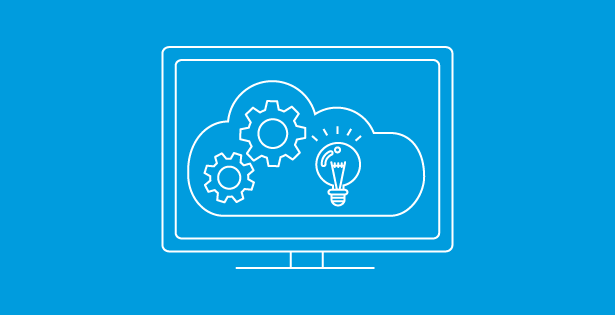MuleSoft Intelligent Document Processing (IDP)
MuleSoft IDP uses AI to extract structured data from unstructured documents such as invoices and purchase orders, supporting multimodal large language models for enhanced accuracy. Users can customize schemas, configure prompts, and leverage Salesforce Einstein models to refine data extraction, with human review triggered when confidence scores fall below set thresholds.
Benefits for Leaders
- Strategic impact: Automates document-heavy processes, allowing teams to focus on higher-value work.
- Operational efficiency: Reduces manual data entry, errors, and compliance risks.
- Business-IT alignment: Ensures extracted data is structured, contextualized, and easily consumable by enterprise systems.
The Challenge: Complex, Unstructured Document Data
Enterprises manage large volumes of unstructured data in PDFs, scanned documents, images, and emails. Manual processing is time-consuming, error-prone, and difficult to scale. Teams struggle with data consistency, compliance, and timely extraction for operational decisions.
Beyond these hurdles, diverse document formats add complexity. Information is scattered across sources with varying layouts, languages, and data types, making standardization difficult. As volumes grow, bottlenecks increase. Delays in extracting critical data can slow invoice approvals, contract execution, and customer onboarding. Inconsistent manual entry raises the risk of compliance violations, financial discrepancies, and missed opportunities. Regulatory requirements for data privacy and auditability add pressure, as manual processes make tracking and transparency harder. Ultimately, these challenges hinder timely, data-driven decisions and efficient scaling.
The Solution: MuleSoft Intelligent Document Processor
IDP automates ingestion, extraction, and contextualization of documents. Using AI and machine learning, it identifies relevant data points, classifies documents, and enriches extracted information with business context.
By processing large volumes of PDFs, scanned documents, images, and emails, IDP eliminates time-consuming manual extraction. Its ability to recognize patterns across diverse formats ensures consistent data output. This reduces bottlenecks that previously slowed invoice approvals, contract execution, and onboarding.
Structured data improves compliance and auditability. Automated contextualization makes meeting regulatory requirements easier, reducing risks of violations and discrepancies. Integration with enterprise workflows ensures extracted data is immediately usable, enabling timely decisions and scalable operations. IDP transforms unstructured documents into actionable insights, minimizing manual effort, improving accuracy, and empowering organizations to operate efficiently and transparently.
Key Capabilities
- Automated data extraction: Extract key fields from PDFs, images, scanned forms, and other unstructured documents; recognizes patterns across diverse types.
- Document classification: Categorizes documents automatically, improving routing and workflow efficiency; supports invoices, contracts, forms, and other critical documents.
- Context enrichment: Enhances extracted data with metadata and business context; improves downstream integration and decision-making accuracy.
- Integration-ready outputs: Generates structured data formats compatible with MuleSoft integrations; seamlessly feeds enterprise systems, reducing manual transformation steps.
Developer Deep Dive: IDP in Action
Example use case: Automating invoice processing
- Document ingestion: IDP ingests invoices received via email or document repository.
- Extraction and classification: Key fields such as invoice number, date, vendor, and amounts are automatically extracted; documents are classified by vendor, department, or invoice type.
- Context enrichment: Adds business context, such as purchase order references, approval workflows, and department codes.
- Integration and validation: Structured data is sent to ERP, accounting, or finance systems; validation rules ensure accuracy before processing.
Result: Manual invoice processing is drastically reduced, errors are minimized, and approvals and payments occur faster with complete traceability.
Business + IT Alignment
IDP bridges the gap between business operations and IT systems:
- Executives gain faster access to accurate data for decision-making.
- Developers integrate structured outputs into workflows with minimal coding.
- Business teams benefit from reliable, consistent data and improved operational efficiency.
Key Takeaways
- IDP automates extraction and processing of unstructured documents, accelerating workflows.
- Enterprises reduce errors, improve compliance, and scale operations without adding headcount.
- IT and business teams align through structured, context-rich data ready for integration.
Looking Ahead
This is just the beginning of how MuleSoft can transform document-centric processes. In our next blog, we’ll explore real-world use cases for intelligent document processing—from automating compliance workflows to accelerating data-driven decisions across your enterprise. Stay tuned for integration best practices and strategies to scale automation.
Intelligent document processing powered by MuleSoft is more than a technology upgrade—it’s a strategic advantage. If your organization is ready to simplify integrations, enhance compliance, and drive measurable outcomes, now is the time to act. Explore how RSM can help you harness MuleSoft to modernize document workflows and position your business for growth.
Learn More about MuleSoft services | RSM US
This article was written by Jake Broesch in collaboration with Raghvendra Kumar.
 Raghvendra Kumar brings hands-on expertise in MuleSoft development to RSM’s Enterprise Integration & Migration team, where he focuses on building efficient data integration pipelines. He focuses on transforming legacy systems into agile, connected environments by making data flow smarter and faster.
Raghvendra Kumar brings hands-on expertise in MuleSoft development to RSM’s Enterprise Integration & Migration team, where he focuses on building efficient data integration pipelines. He focuses on transforming legacy systems into agile, connected environments by making data flow smarter and faster.

 RSMUS.com
RSMUS.com


